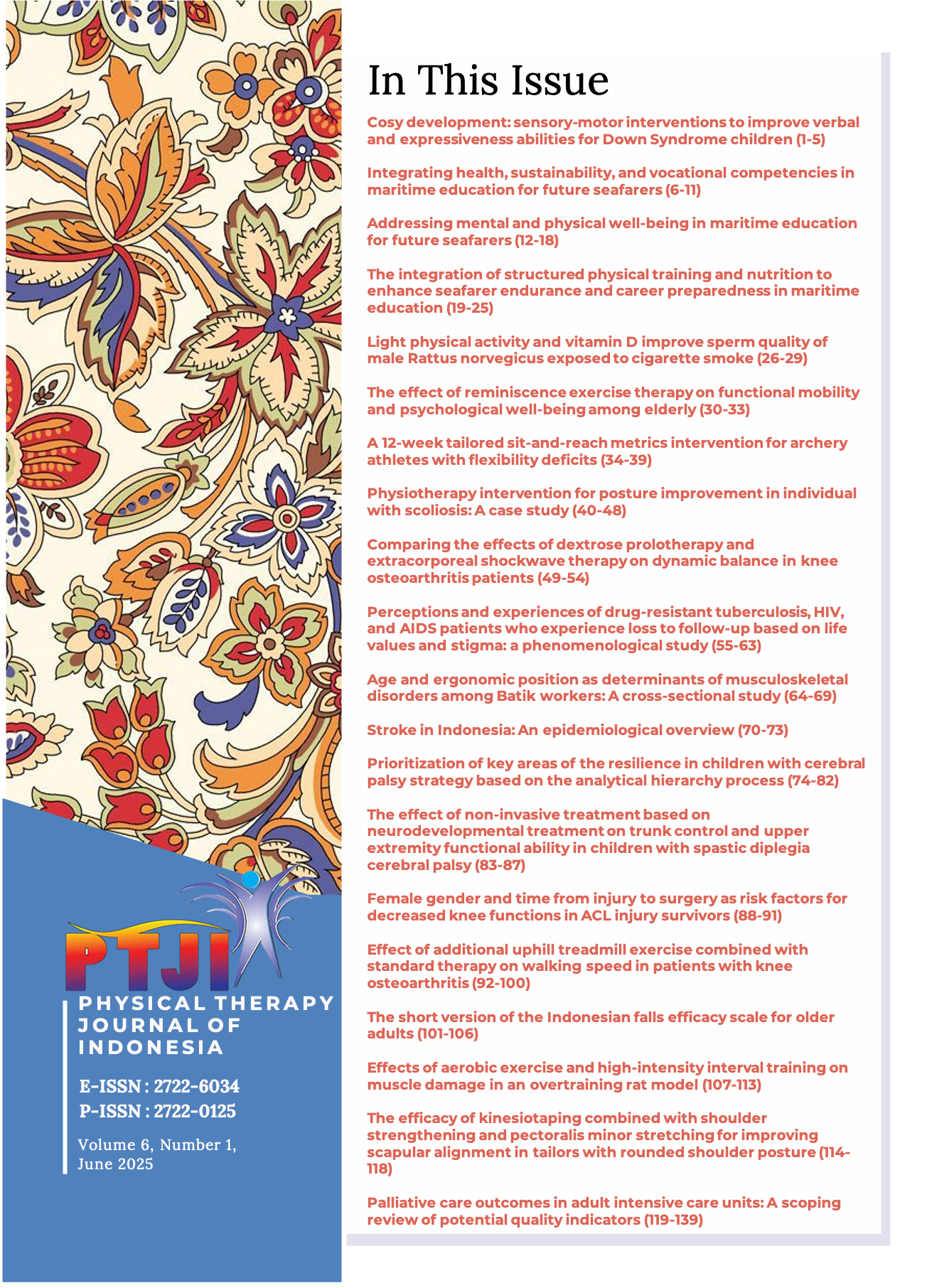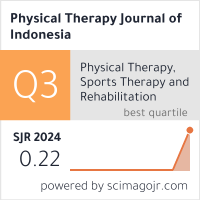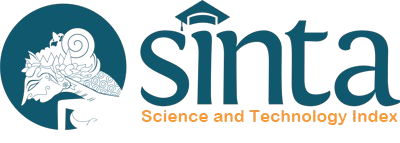Female gender and time from injury to surgery as risk factors for decreased knee functions in ACL injury survivors
Abstract
Background: Anterior cruciate ligament (ACL) injuries are serious orthopedic conditions that require long-term recovery and significant costs. This study aimed to assess the risk of decreased knee function among ACL injury survivors in the Indonesian ACL community.
Methods: This study used a prospective observational cohort design with a population of all members of the Indonesian ACL community who experienced ACL injury. The primary outcome of this study was a decrease in knee function was measured using the Lysholm knee score. We calculated univariate and multivariate analyses using logistic regression for each variable.
Results: The results showed that female gender and time from injury to surgery were significant factors that influenced poor knee function after ACL reconstruction. Women had a significantly higher risk (odd ratio (OR) = 15.28; adjusted OR (AOR) = 23.47; p-value < 0.010). In addition, the time between injury and surgery significantly affected postoperative knee function (AOR = 1.05; p-value = 0.049). Other factors such as age and body mass index did not show significant associations in either univariate or multivariate analyses.
Conclusion: This study confirmed that female gender and time from injury to surgery were important factors influencing poor knee function after ACL reconstruction. Timely intervention and focused rehabilitation programs are key steps to improve patient functional outcomes.








3.gif)

